Science Vs. Skateboarding: What's The Best Grip Tape?
Skaters have different preferences when it comes to grip tape for a variety of different reasons. But, what makes the best grip tape for a skateboard? Should we focus on traction when making our decision? Or, should we consider other factors too, such as consistency, durability, ease of application, and shoe preservation? Or just the simple fact it makes it easier for us to stand on the board.
To cater to our skate nerd instincts, we delved into DIY science and conducted experiments comparing the top grip tape companies. Our objective: find the best grip tape using “Science”.
First off, What is Grip Tape?
For those of you living under a rock, skateboard grip tape is a course, sandpaper-like material that is applied to the top surface of a skateboard deck. It provides traction and grip for the skater's feet, allowing them to maintain control and stability while performing tricks or even just pushing down the sidewalk.
Grip tape typically consists of a layer of adhesive backed with a layer of abrasive material, such as silicon carbide or aluminum oxide. Grip tape is an essential component of a skateboard setup and is customizable in terms of brand, level of coarseness, and colorful design. Now you know, let's dive into the science.
Experiment #1: Grip Tape Traction & Wet Traction Test
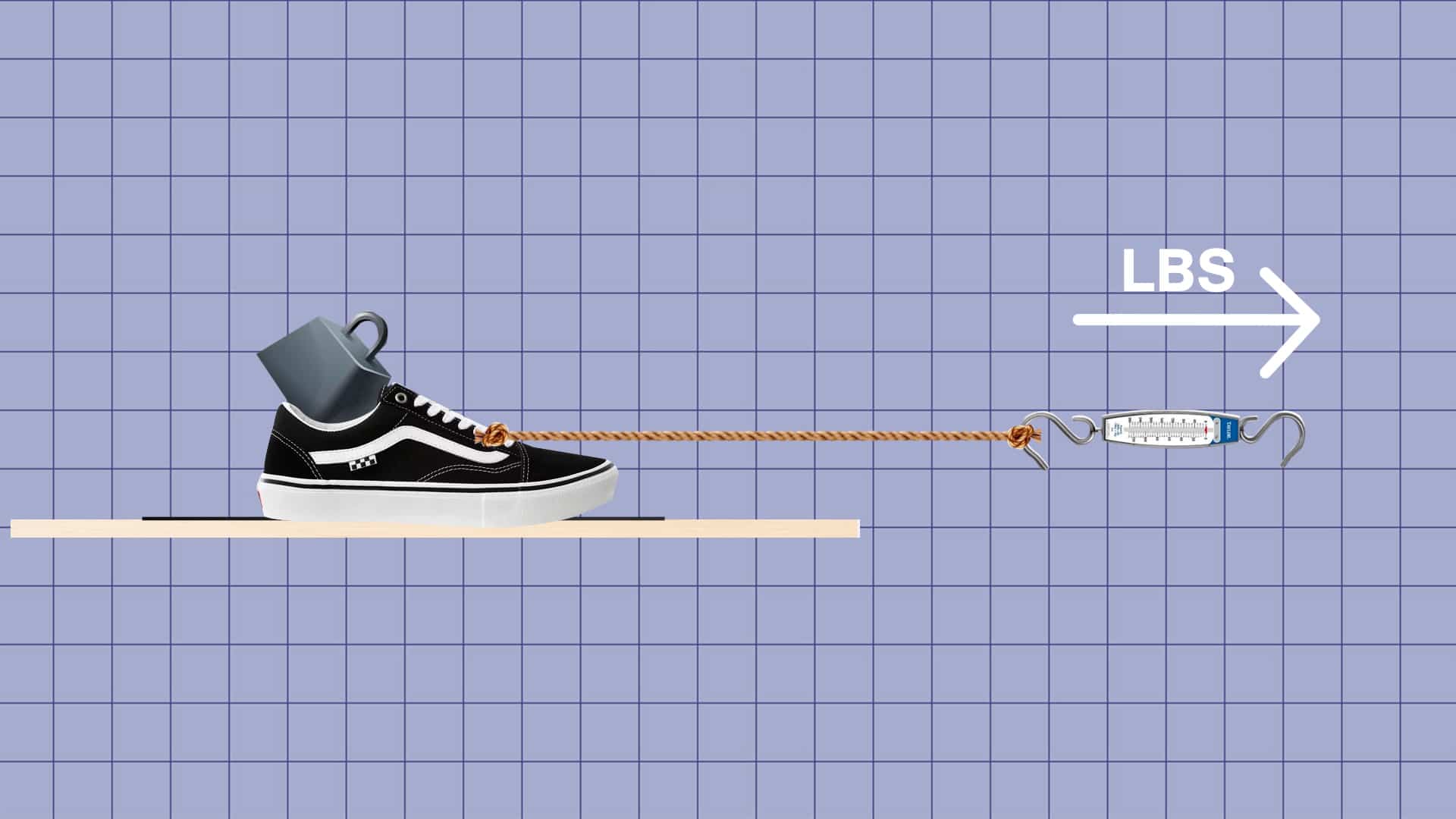
For our initial experiment, our goal is to determine which of the grip tape brands offered the most traction. We developed a method to measure the force needed to make a Vans Half Cab slip off the grip tape. First, we applied each brand of grip tape to a piece of plywood. Then, we used a pull scale to measure the necessary force to displace the shoe. To ensure consistency, we used twine for pulling the shoe since it has minimal stretch. We repeated the test three times for each grip and calculated the average results for accuracy.
After wrapping up our first experiment and examining our results we found that Mob grip tape emerged as the top performer with outstanding traction, closely followed by Pepper. Jessup, Shake Junt, and Grizzly grip tape also exhibited similar performance in keeping the shoe firmly planted on the board. While these findings were not entirely surprising, as these brands are commonly used, the data still provided interesting insights.
In our follow-up experiment, we wanted to see how the grip tapes would hold up when they got wet. To mimic wet conditions, we sprayed water generously onto the grip tapes and proceeded with the traction test. The results revealed something interesting: all the grip brands experienced a decrease in traction of about 1 to 2 pounds when wet.
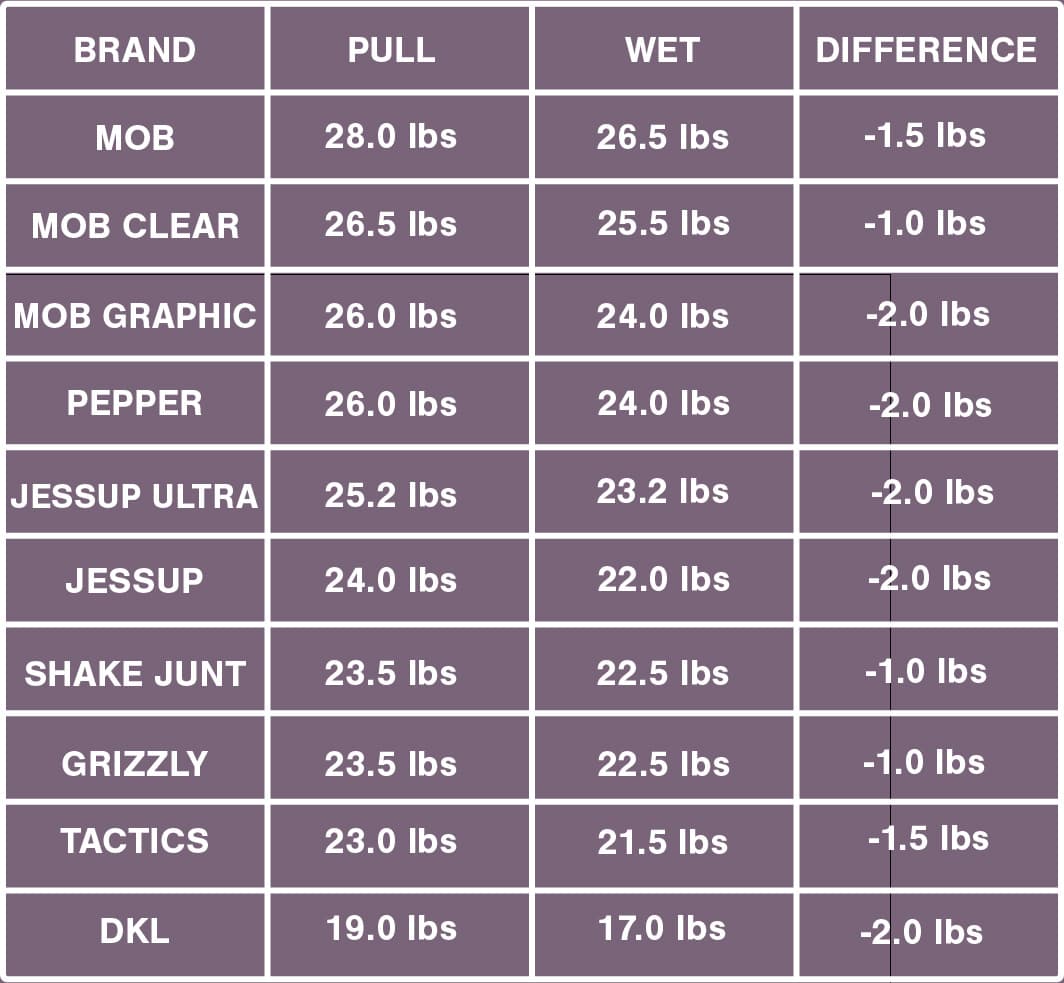
What stood out to us was how consistent this decrease in traction was across the different grip brands. It didn't matter which specific brand we tested, they all showed a similar impact on traction when exposed to moisture. This means that in wet conditions, skaters can expect a slight reduction in traction regardless of the grip tape they choose. It's important to note that even though the decrease in traction might be minor, it could still affect a skater's ability to maintain control while skateboarding in damp or rainy environments. Here's how everything ranked in another view.
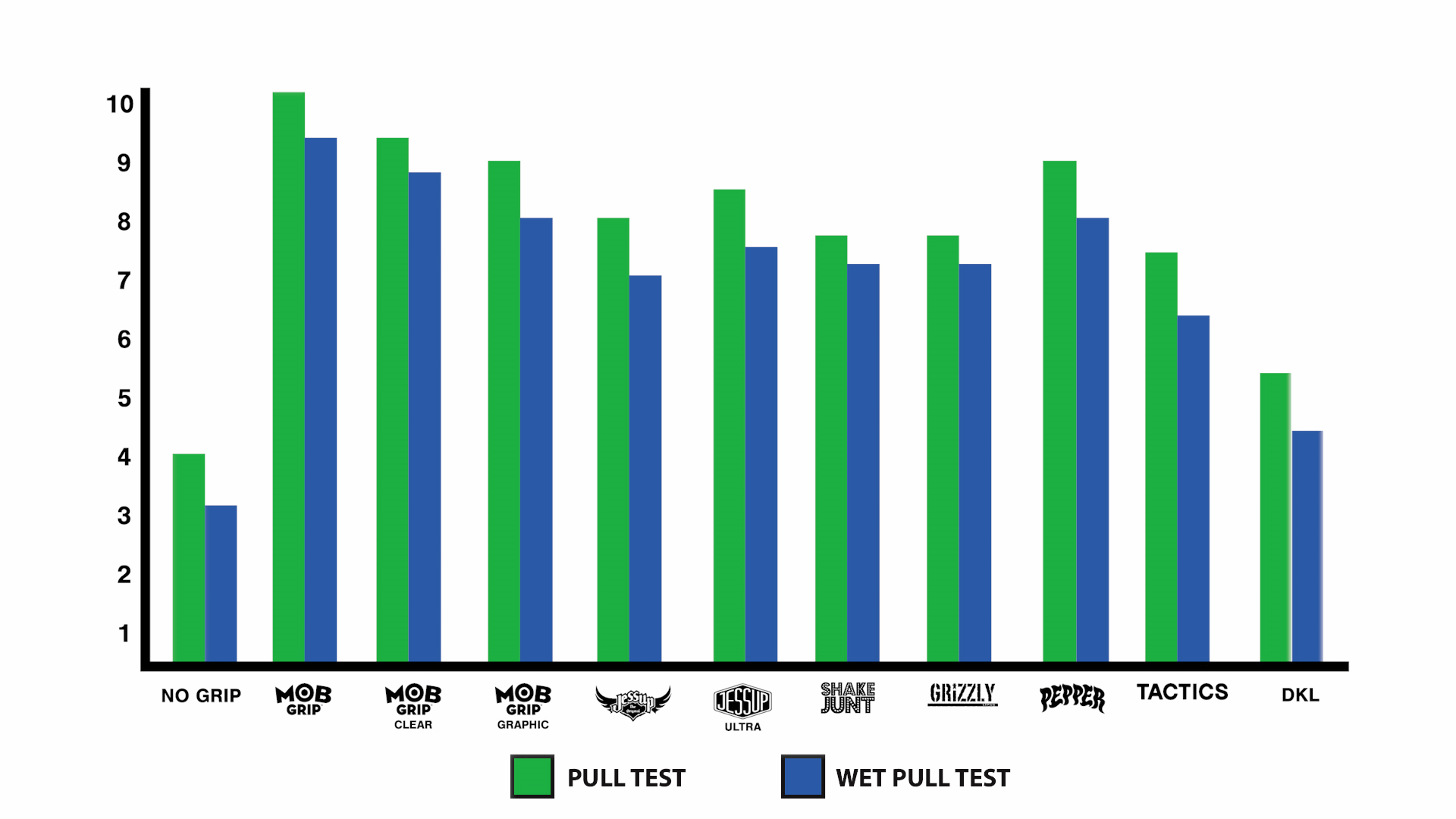
Experiment #2: Grip Tape Slant Test
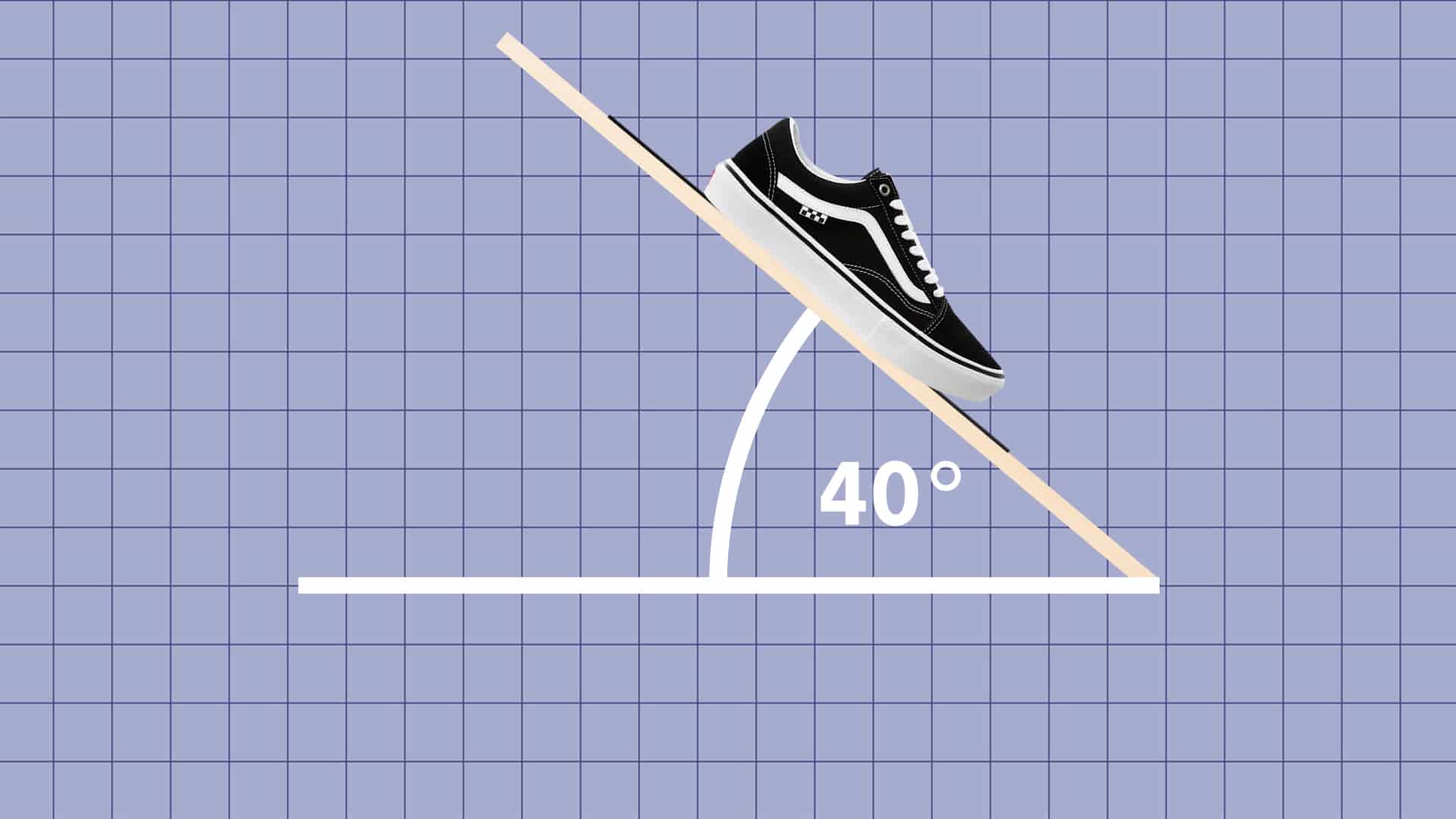
For our next experiment, we grabbed our protractor and got down to the science with a slightly different approach. We placed the shoe on the grip tape-covered board attached to a hinge, and tilted it upward, paying close attention to the precise angle at which the shoe started slipping off. This angle measurement allowed us to gather additional data and validate the results we obtained from the previous pull test.
What was really cool was that the data from the slant test matched up pretty closely with the results of the pull test. It was a double confirmation of the first traction test. When the grip performed well in the pull test by providing strong traction, it also proved to be good at preventing slippage during the slant test.
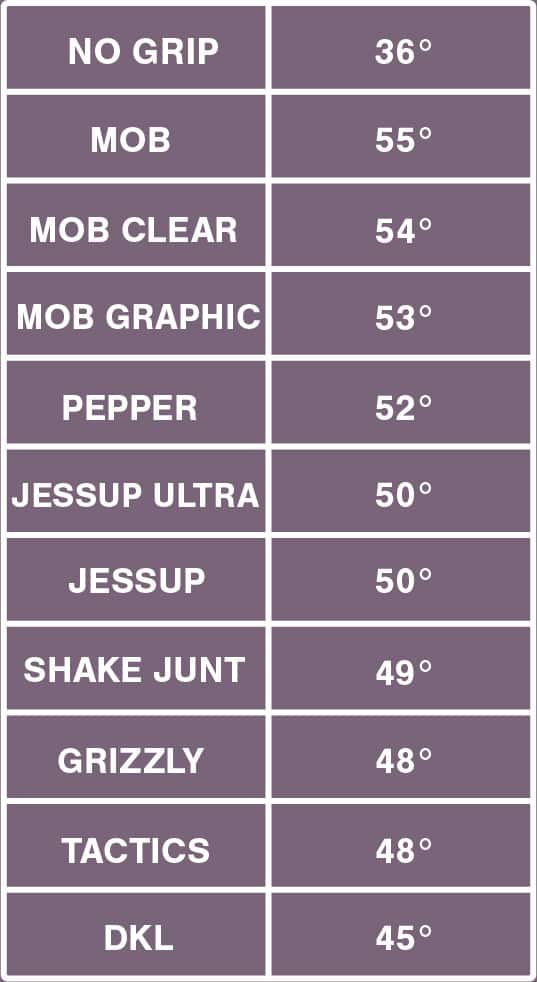
This correlation between the two tests gave us even more confidence in our findings. It was demonstrated again that Mob was the stickiest grip tape, with Jessup and Shake Junt close behind. Proving that the grip tapes' prior performance in tests wasn't just a fluke or a one-time result. Instead, it reinforced the consistent differences between the various grip brands we were testing.
Experiment #3: Grip Tape Abrasiveness Test
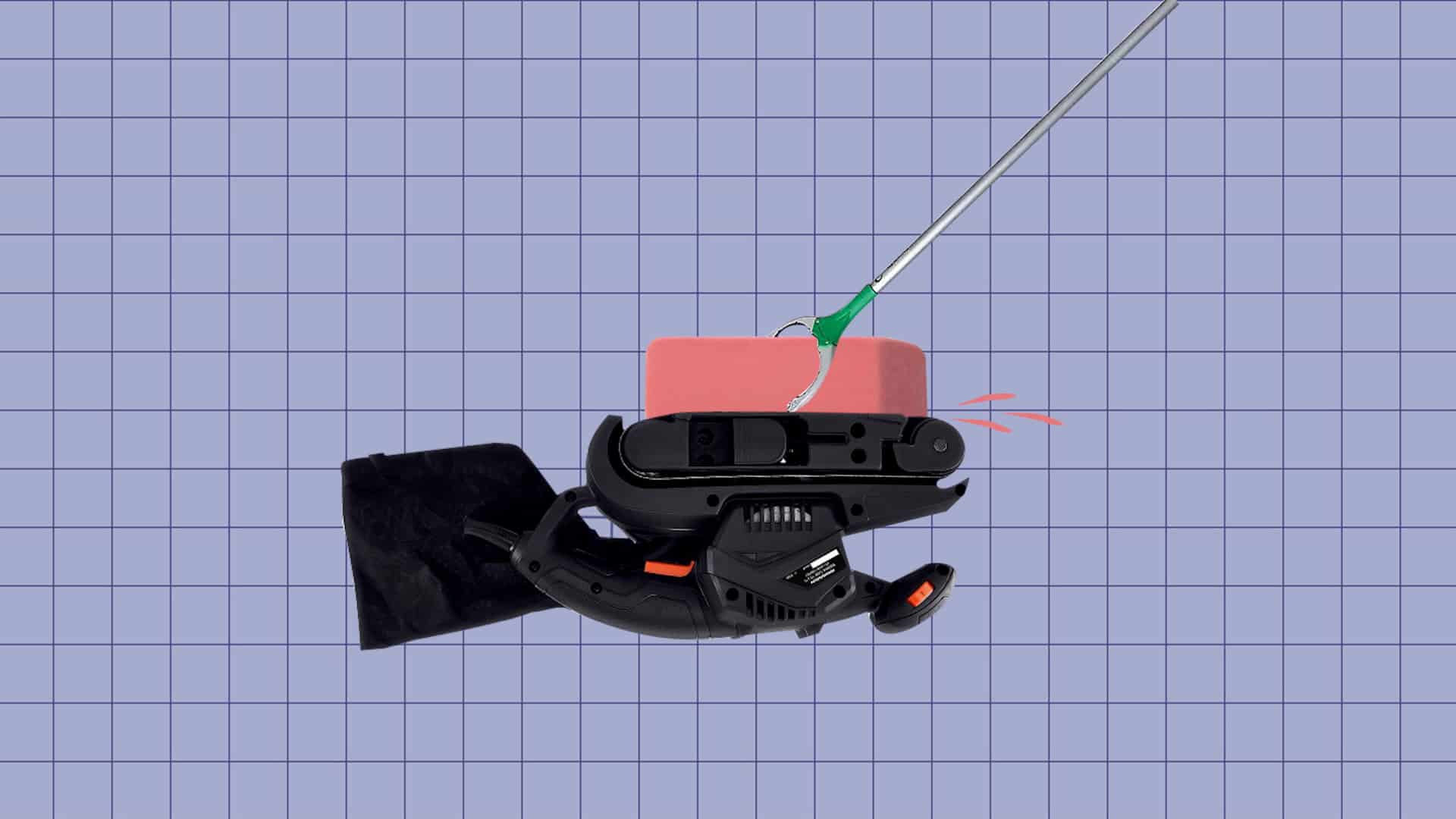
To assess the abrasiveness of the different grip tapes, we designed a creative test using a belt sander and a mechanical arm. We placed a pencil eraser onto the grip tape and applied pressure using the mechanical arm while the belt sander was in motion. This setup allowed us to simulate the wear and tear that the grip tape would experience over time. After subjecting the grip tape to the grinding motion for a solid minute, we examined the erosion caused to the eraser.
However, there was a slight challenge we encountered during this test. The erasers did not wear down uniformly flat, which made it difficult to directly measure the erosion. To overcome this the first time, we attempted to use the water displacement method to record volume, but the results were once again difficult to determine. But, being the clever skate scientists we are we found another way by gabbing our trusty gram scale. Placing each of the erasers on the scale before and after each test, measuring the change in weight of the eraser eroded away from the grip tape.
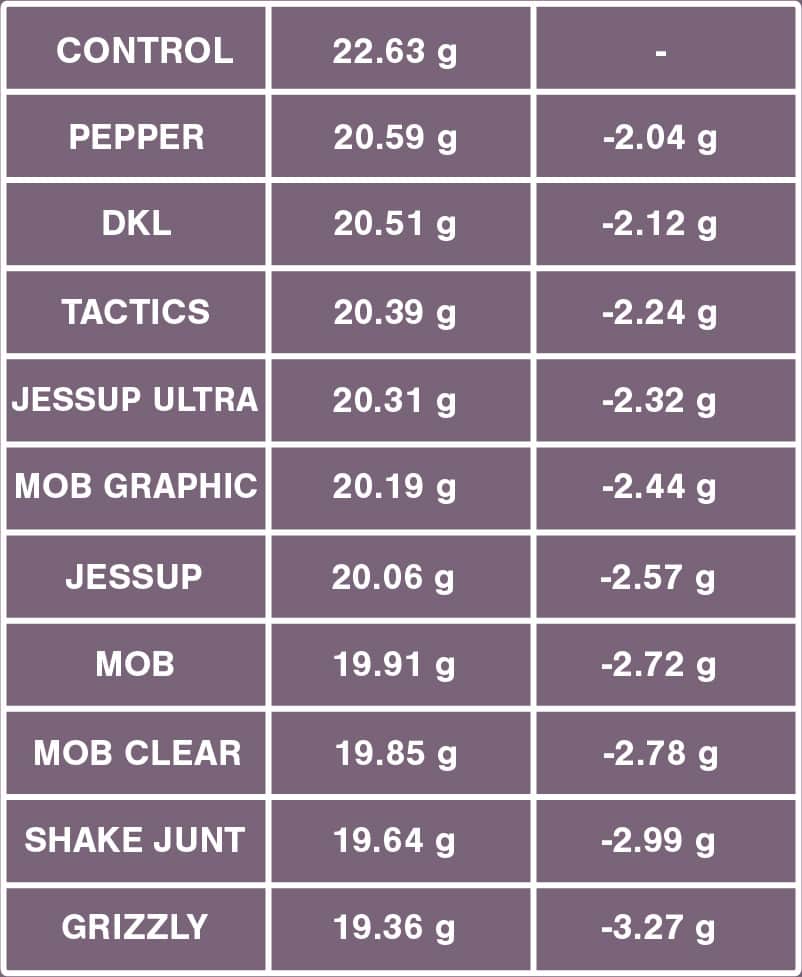
We were surprised to see Pepper do less damage than the non-abrasive DKL. It was also curious to see Shake-Junt and Grizzly do the most damage, despite having less grip than Mob. We think it would be interesting to do this experiment again with different materials to see how the results differ, or perhaps take a piece of suede and see how long it takes for each grip to wear through it. Let us know if you would like to see that in the youtube comments.
Experiment #4: Grip Tape Durability Test
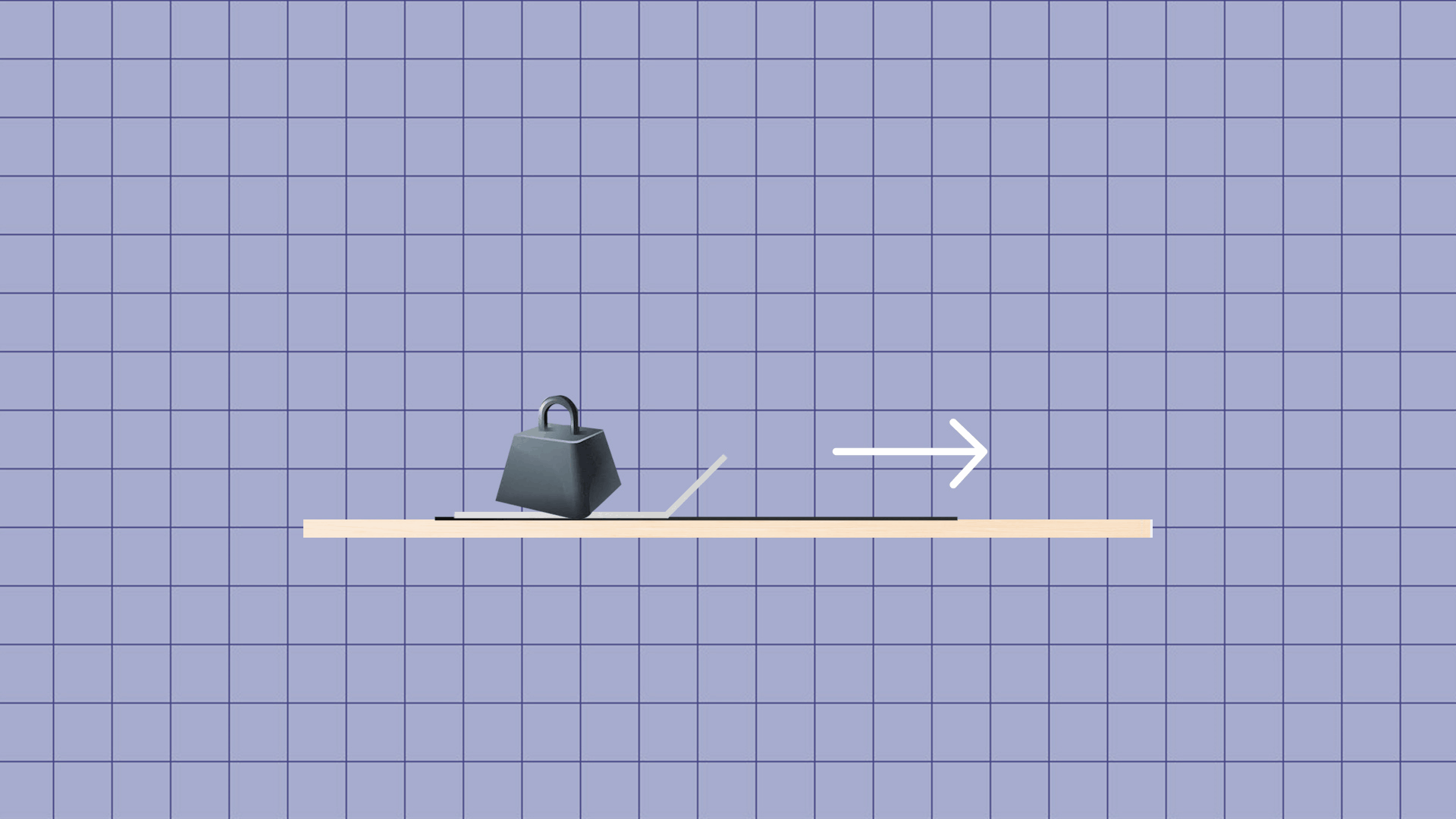
For our final experiment, we focused on examining the durability of the grip tape. We began by using a fresh square of Jessup grip tape and systematically scraped the top surface of each grip tape sample. This simulated the wear and tear that grip tapes typically experience during regular skateboarding sessions.
Following the scraping process, we repeated the traction test to measure the amount of traction loss caused by the scraping. This enabled us to assess how the durability of each grip tape brand affected its performance. By analyzing the results of this experiment, we gained valuable insights into how different grip brands hold up over time and their ability to maintain traction even after prolonged use.
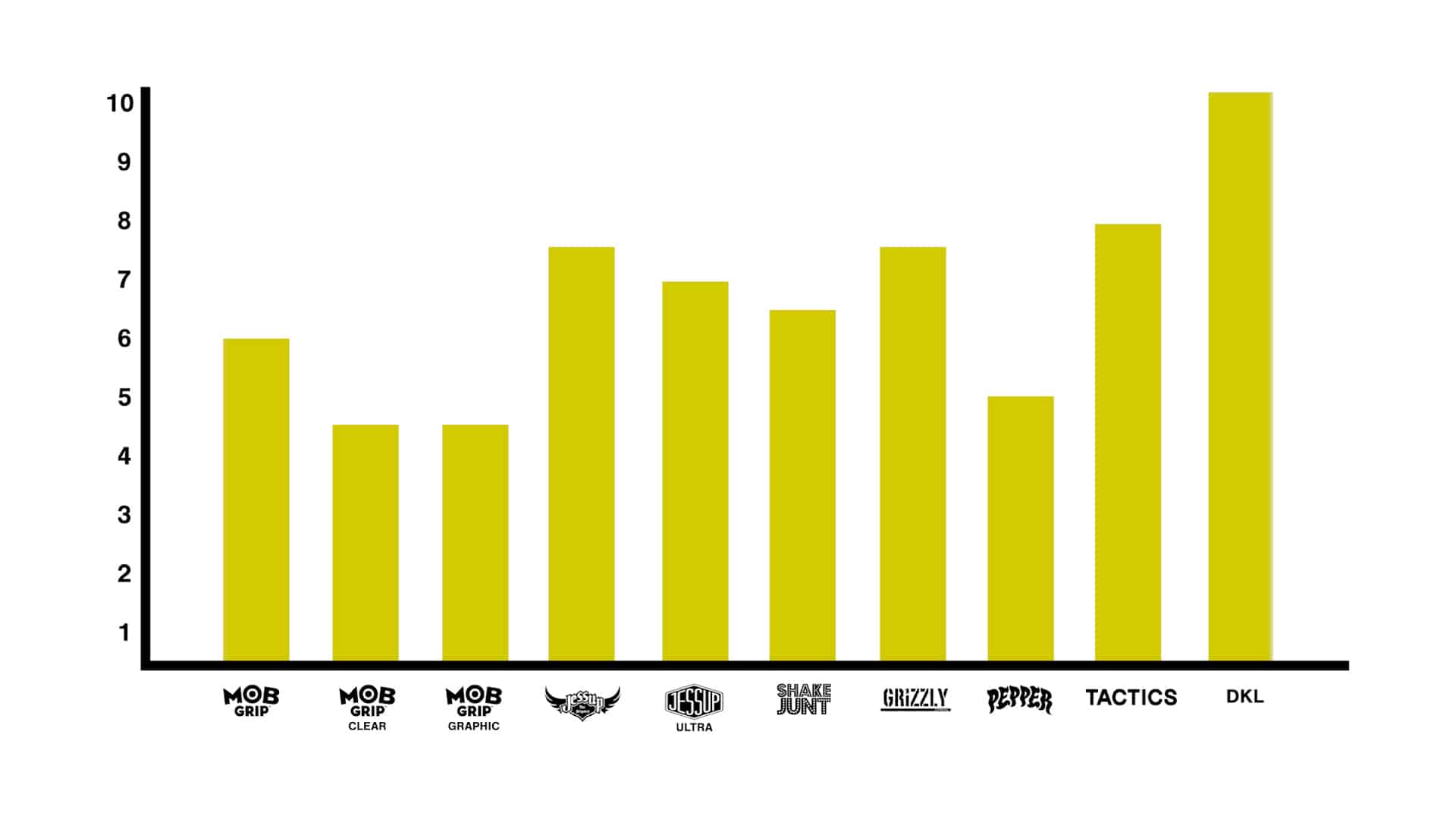
Based on our data, it appears that less grippy brands initially exhibit greater durability and maintain consistency over time. Conversely, more grippy brands tend to lose traction, yet still retain a higher overall level even after experiencing such loss
So what's the best skateboard grip tape?
First place: Mob emerged as the top performer in terms of traction.
Second Place: Mob Clear
Third Place: Graphic Mob and Pepper tied!
Regarding the grip tape company that caused the most damage, the results were inconclusive, but you can refer to the aforementioned data for details. In our final assessment, Jessup and Grizzly demonstrated superior performance by retaining the least amount of traction loss.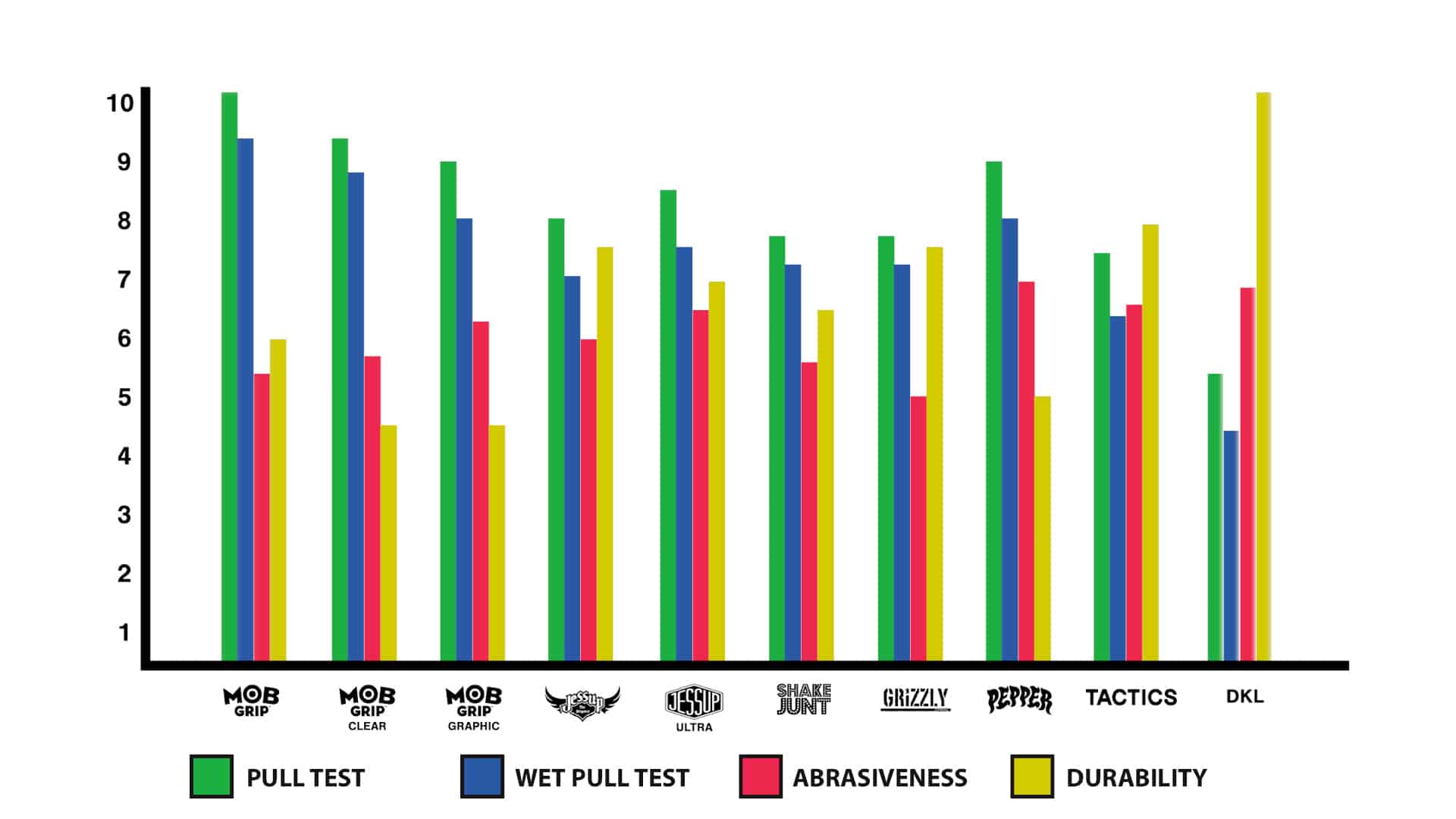
Nevertheless, it ultimately boils down to personal style and preferences when it comes to skateboarders' choice of grip tape. These experiments, however, provide you the skater with an objective means to compare various grip brands and make informed decisions based on their individual needs and preferences.















































